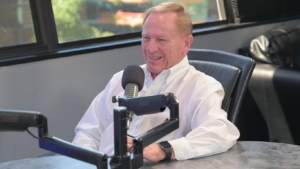Once upon a time, everything was a one-size-fits-all. From mass-produced clothing and network TV programs to pre-packaged travel tours and ad slogans, everyone was served the same experience.
You got what you got. There was no flexibility for individual preferences.
Fast forward to today, when consumers want a fully personalized experience that takes into account their every whim. If you can’t deliver, they’ll jump ship to the next competitor who is willing to put in the effort.
In a world where options are endless, brands that embrace this craving for customization are thriving. In this article, we’ll dive into why personalization is the hottest ticket in town and how to use it to your advantage, regardless of industry or niche.
DEEPER DIVE: 20 emerging business categories gaining traction in Arizona
The Personalization Explosion
Customers are a lot more savvy nowadays, especially when it comes to what brands can offer. So, they don’t settle for a product that’s “good enough”; they want something that feels like it was designed specifically with them in mind.
At the heart of this obsession is a simple truth: people love to feel seen. Whether it’s a playlist that knows you have a soft spot for 90s alt-rock or a skincare brand that tailors serums to your exact skin type, personalization taps into our deep human desire for recognition and uniqueness.
Data shows this is not just a passing trend. In recent surveys, 81% of customers stated they prefer brands that offer a personalized experience. Similarly, 70% of respondents want personalized interactions with representatives of their favorite brands.
Plus, it’s not just about satisfying the customer – personalization saves time, reduces decision fatigue, and often results in better experiences. In a world overflowing with choices, personalization cuts through the noise.
How Brands Are Riding the Personalization Wave
The current market conditions are perfect for hyper-personalized offers, and brands are having a blast!
Take Nike, for instance: the Nike By You feature lets you customize your favorite sneaker models before placing an order. You’ll have unique-looking Nikes that match your personality without sacrificing comfort and quality.
Starbucks doesn’t throw in the towel either. Their app lets you concoct a quad-shot, half-decaf, oat milk latte with two pumps of chaos, and they’ll smile while making it.
Personalization is not a big-brand game anymore. Due to smart tech, smaller brands can get on it too.
For instance, a company like Canvas by Numbers can use today’s technology to help customers explore their passion for painting, even if they may not have much talent. They can even take personal photos and turn them into paint-by-numbers kits that customers will paint following the instructions. This is a great example of how personalization can help bring clients’ dreams to life.
What these brands understand is simple: when you make people feel like they’re part of the creation process, you upgrade your product to an experience. You build emotional loyalty, which, frankly, is the best kind of loyalty there is.
Pros and Cons of Personalization
There’s no going back to the old one-size-fits-all script. So, unless you want your brand to look like a flip phone at a smartphone convention, you’d better start thinking about ways to implement personalization into your products or services.
Customers who don’t feel seen move on. They have endless options just a tap away, so moving on has never been easier.
However, there’s also a dark side to personalization: overzealous personalization. These are the ads that chase you for socks you glanced at during a 2 a.m. scroll, or that newsletter that feels way too personal.
Then, there are the over-customized products, where the personalization options are so many and nitpicky that the buying process becomes overwhelming. (“Do you want your coffee mug with your initials, zodiac sign, favorite quote, and a picture of your pet? No? Are you sure?”)
Moreover, personalization algorithms can become too aggressive and trap consumers in a “taste bubble,” only showing them things they already like. This prevents real discovery and surprise.
Personalization taken to extremes can feel like a digital stalker (and may have the legal consequences of one). The best way to make sure you’re on the right train and carriage is to find the right balance between cute customization and digital stalking.
In Summary
Personalization is important for the modern customer, just not too much of it. Brands that embrace it shine; those that don’t fade. It’s as simple as that.




